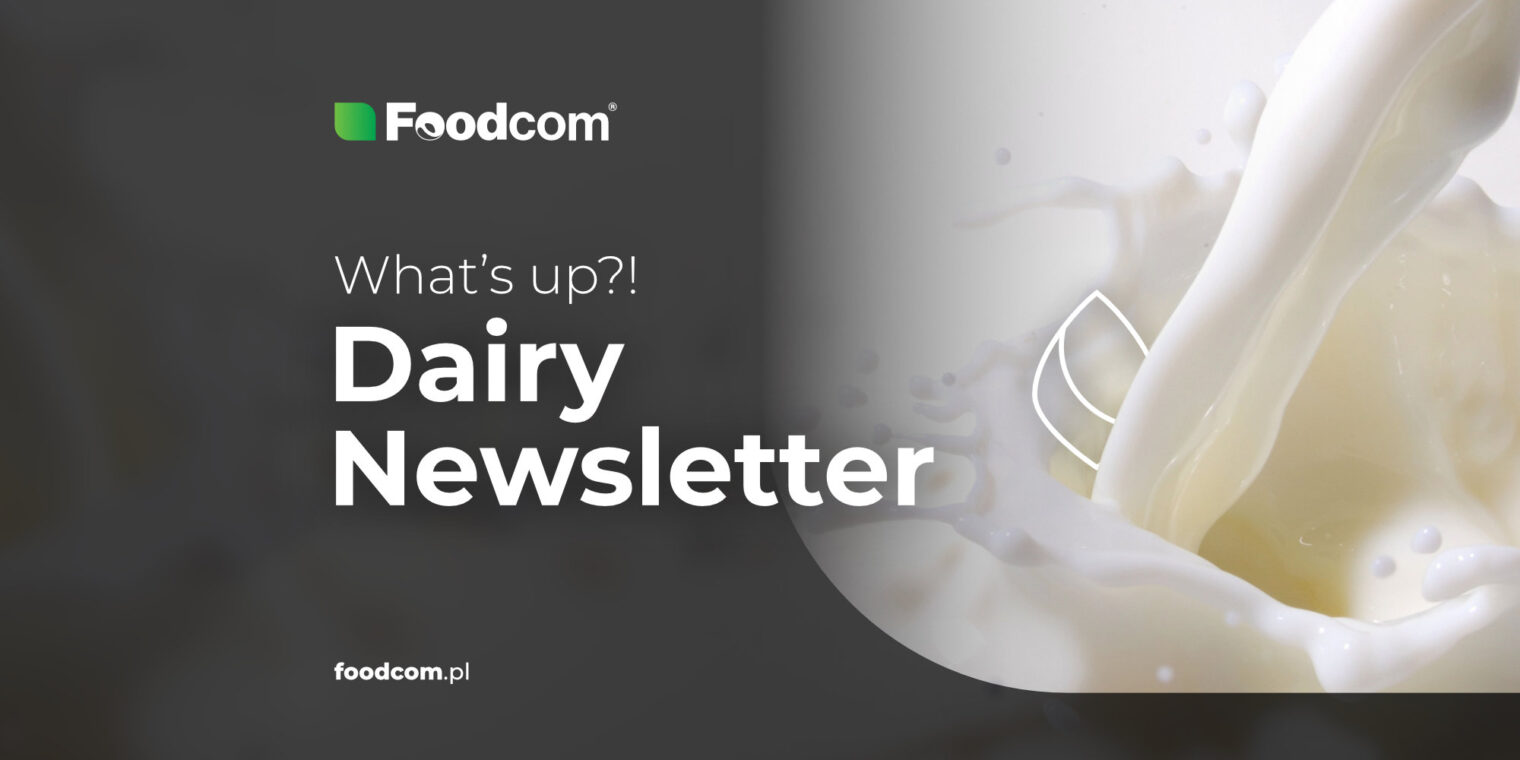Rising production costs, inflation, energy supply disruptions, COVID-19 constraints, labor shortages, political unrest, and related declines in demand… How much can you hear about the same thing, right? Unfortunately, this is again the content of our newsletter because this is still exactly the current global economic situation.
There is undoubtedly movement in the dairy market, although probably not in the direction many would like to see: The vast majority of commodity prices fell last week. There are bittersweet suggestions that this year’s Blue Monday has not lasted the usual one day, but will stretch over an entire month, if not a quarter.
Skimmed Milk Powder
This commodity is under severe price pressure, which is further exacerbated by the decline in gas prices in Europe. However, end users are still not coming down, so this price drop is not seen on store shelves. Skimmed Milk Powder producers keep complaining that they are losing money drying milk at current price levels.
Butter
Europe is currently the cheapest supplier of this commodity. Although in the past this title was attributed to the Oceania region, the situation has changed, and it is now Europe that holds this honorable title. It would have been nice to see similar reductions in our shopping carts, but they have not carried over to the retail sector for now. Have the cuts gone too far? Butter producers are convinced that this is the case. Although the price of Butter has dropped significantly in recent months, there have not been many inquiries about it for now.
Milk Protein Concentrate 85%
Compared to other proteins on the market, Milk Protein Concentrate remains strong. Demand for this commodity continues unabated. It is not a commodity people are feared of or have to liquidate.
Gouda/Edam
We have lived to see very interesting times, in which cheese analogue is more expensive than real milk cheese. Isn’t that strange? Cheese producers are still in a situation where they have to flee from already matured stocks that have to find their place in our refrigerators.
What else?
Europe
Not very optimistic forecasts for dairy prices in Ukraine
Ongoing hostilities, energy supply problems, dependence on the global market situation, and inflation in Ukraine led experts to predict that dairy products could become up to 25% more expensive in 2023 in Ukraine. Rising commodity and energy costs remain the main drivers of high prices. The thin silver lining is that product prices will not change significantly in January, despite the rise in commodity costs.
Danone has announced a global action plan aimed at reducing absolute methane emissions from the company’s fresh milk supply chain by 30% by 2030
The company expects to remove 1.2 million metric tons of carbon dioxide equivalent from methane emissions. The targets were set based on what has been achieved to date. Reducing methane emissions has immediate climate benefits, unlike reducing carbon dioxide emissions, which have much longer-term implications.
Norwegians put inscriptions in Sami on milk cartons
Tine Dairy has started using cartons with texts in the native Sami language. The first batches of the product are already available on the shelves in Troms and Finnmark. Ideas like this definitely help different groups in the country speak the same language. Perhaps more companies from different countries should decide to put native languages on their cartons?
The Americas
The Canadian Dairy Commission will implement another round of wholesale milk price increases beginning Feb. 1
Last year, there were two price increases: by 8.4 percent in February and by 2.5 percent in September. Prices are expected to rise another 2.2 percent starting early next month. The increase in milk prices is a response to the challenges producers face: rising feed costs, fertilizer costs, fuel costs and interest rates. Will these increases ever end? Currently, it does not look like they will.
California’s dairy industry has been hit by raging storms
The extreme weather conditions of the last few days have resulted in many fields and barns being underwater and power often being out for extended periods of time. As a result, some dairy operations have experienced unplanned downtime. The weather events of the past few weeks have put California in a state of emergency… both because of the drought and the flooding.
Argentine government officials are looking for answers and solutions to the problems caused by the worst drought in decades
Although it primarily affects grain and other crops, the dairy sector is not unaffected. Consultations with farmers are also expected to take place in the near future. Adequate solutions are being desperately sought, so fingers crossed that they can be found.
Asia & Oceania
New Zealand exporters face challenges due to the lack of dry ice in the market
The closure of the Marsden Point refinery last year led to shortages of liquid carbon dioxide and dry ice, both of which are essential for keeping shipped dairy products fresh. Some are trying to cope by reusing dry ice from previous shipments. Many point out that the only solution is to increase domestic production of dry ice. Transporting dairy products in New Zealand is walking on thin ice.
Agricultural land in Australia is declining
According to the Australian Bureau of Statistics, farmland in June 2022 was down five percent from a year earlier. Crops of canola, cotton and wheat are increasing, while the country’s dairy herd continues to decline, falling by as much as 10 percent to 2.1 million heads. Just five years ago, there were 2.6 million animals. They say there’s no use crying over spilled milk, but if this continues, there will not be any Australian milk left to cry over.
Synlait Milk has lowered its baseline milk price forecast for the 2022-23 season
The current forecast has been lowered to $9 per kilogram. The reason cited is weaker global demand for milk since September when the previous forecast was released. In turn, the reasons for the lower demand are the global increase in the cost of living and the impact of the COVID -19 restrictions on the economy.







